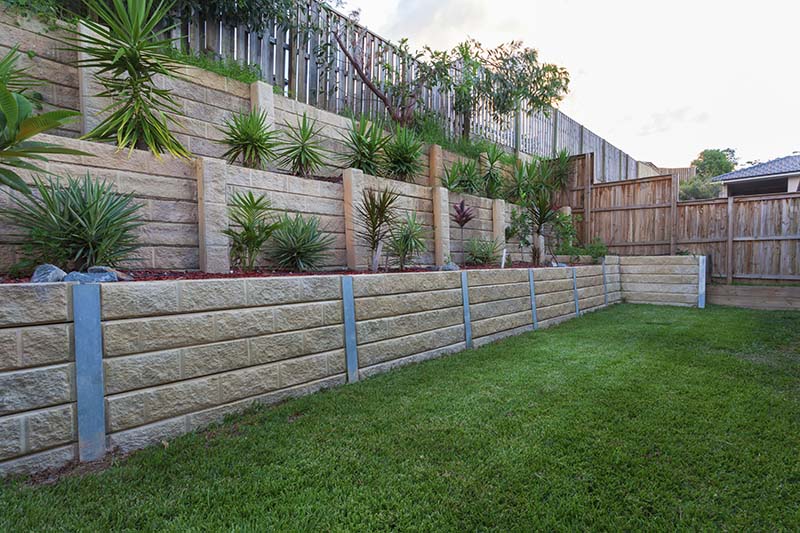If built correctly, a retaining wall can stand strong for years without even the slightest tilt. However, so often those who build their own retaining walls learn a hard lesson – it is not quite as simple as it looks. Many homeowners think a retaining wall just holds up soil from erosion – and it does. However, the pressure a retaining wall has to endure is more than just the weight of the dirt. It also needs to be able to contend with water and proper drainage is the key.

One of the biggest reasons a DIY retaining wall fails is because the homeowner failed to account for water and the pressure it can put on those stones. Without the proper attention given to drainage behind a retaining wall, hydrostatic pressure can build up, leaving it leaning or crumbling after periods of heavy rain.
Like a foundation that isn’t graded properly, water can be absorbed into the soil of a retaining wall. This water, having nowhere to go once the soil becomes too saturated, creates pressure and this will actually move the retaining wall much in the way too much water around a foundation will bow your basement walls.
When installed, drainage behind the wall needs to be addressed. This can be as simple as a gravel backfill, but many landscapers will recommend the installation of a perforated pipe that allows water in so it can be safely ferried and released outside the retaining wall. This prevents hydrostatic pressure no matter how much it rains around your home, ensuring that your retaining wall is built to last.
If you are considering building a new retaining wall or want to troubleshoot a failing one, contact us today. Accurate Lawn Leveling can help you build a retaining wall that not only looks beautiful, but prevents potentially harmful soil erosion in your yard.
